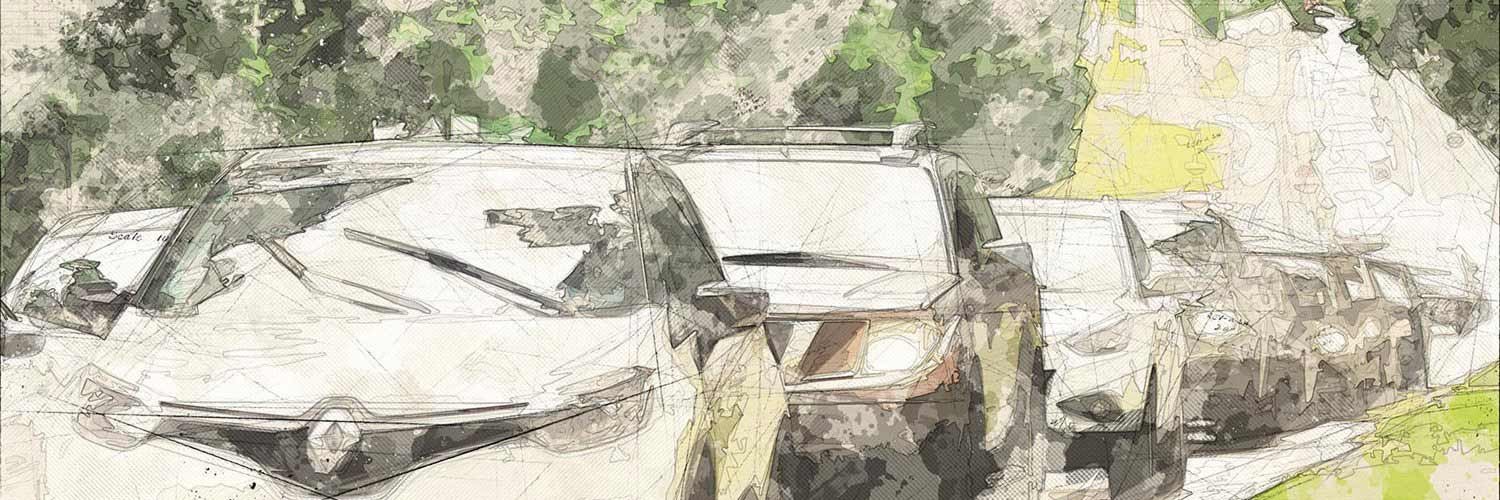Traffic patterns in Cambridge look significantly different from a year ago.
Daily car trips in Cambridge are still mostly below January levels: Perne Road, East Road, Hills Road and Cherry Hinton Road are 12–13% lower; Milton Road, 10%; and Coldhams Lane, 8%. Station Road is down 31% and Tenison Road 49%, mostly explained by fewer station pick-ups/drop-offs. However, traffic on Newmarket Road is up during the week. Evening peak flows are, in most cases, higher than last year on Tuesdays and Fridays. And on all days, it appears people return home earlier.
Car traffic is down 60% at the Parkside end of Mill Road, and 45% at the east end, owing to reduced station traffic and the closure of the bridge to general motor traffic. That looks to have caused a noticeable uptick in traffic on Station Road, Hills Road and Cherry Hinton Road.
The Grand Arcade and Grafton car parks are a little more heavily used than this time last year. Park Street is not quite so busy, and there’s no data from Queen Anne Terrace. The big change though is that Park & Rides are seeing roughly a third of the usage of this time last year. Some of that reduction will be drivers parking at public or employer car parks in the city instead.
Cycle traffic is much lower everywhere: 35% down on Hills Road and 23–24% on Milton Road, Cherry Hinton Road and East Road. It’s 41% down at the Parkside end of Mill Road, but almost unchanged at the eastern end, and 7–9% higher on Coldhams Lane and Vinery Road. Pedestrian and cycle traffic over the cycle/footbridge by Cambridge station are both down 36–37%.
If the reduction in cycle trips indicates how many people are still working from home or not working at all (furloughed or laid off), then the smaller reduction in motor traffic is probably owing to people shifting from bus and train to car. (Other theories are also available.)
If the still-upward trend in car traffic continues, evening peaks are likely to become increasingly congested. That will lead to worsening air quality and unreliable bus services.
- View the graphs (updated to 13 December 2020)
- Download the daily traffic graphs as a PDF (large file!)
- Download the weekly traffic graphs as a PDF
- Access source data
 |
 |
Vivacity Labs sensor locations

This article was first published in the Cambridge Independent on 21 October 2020.



Edward
Your article in the Cambridge Independent on ‘What is the traffic like in Cambridge’ (22/10/20) was very interesting.
But the map accompanying it on the SCT website shows that all of the sensors used to collect data are south of the river, except the one on Milton Road.
Could sensors also be placed on Gilbert Road, Arbury Road and Kings Hedges Road to help answer questions about the impact of the ‘improvements’ to Histon and Milton Roads?
Arbury Road East Residents Association has collected data on these roads that shows, despite its narrowness, that Arbury Road carries more vehicular traffic than either Gilbert or Kings Hedges Road – despite being earmarked by the County Council as a designated ‘high quality cycle route’.
See https://www.arera.org.uk/arera-monitors-the-impact-of-histon-road-closure/
We have only analysed the data available. The sensors themselves are funded and organised by the Greater Cambridge Partnership (GCP) Smart Cambridge programme. Anyone requests for new sensors to be installed will need to be directed to GCP:
https://www.greatercambridge.org.uk/contact-us